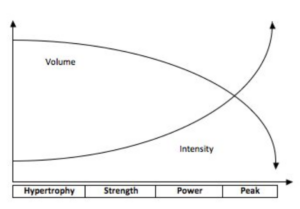Strength Training for Triathletes:
Triathlons are a high demand event which places a significant amount of physical stress on the body. Therefore, it is important to understand the demands of each component of the triathlon when considering strength training.
Demands of Triathlons:
We all know that the triathlon consists of three different sports being swimming, cycling and running. Having three segments of the event influences how triathletes prioritize their training throughout the year. Given the high demand of the event, as important as it is to train in the pool, training on the bike or getting in those running km’s. The inclusion of strength training must not be neglected.
The constant swimming, cycling and running load places major physiological stress on the musculoskeletal system. The volume of the training can be quite high and can result in overtraining, leading to injury if this is not managed or planned correctly. This could be a potential reason why some choose to neglect strength training, and with rest and recovery days.
Strength training includes benefits from muscle strength, muscular endurance, load tolerance, connective tissue (joint, tendon and ligament) health, flexibility, power and most importantly, injury prevention.
The most important muscle groups are going to be the lower limbs (Glutes, quads, hamstrings and calves) along with the core. Additionally, upper body and back strength is important during swimming. Strength training is advantageous as the transferable adaptations assist in running posture, tolerance to cycling, as well as the ability for swimming postures.
Periodisation of strength training:
The inclusion of strength training in athletes who perform in multiple sports, (in this instance the triathlon) can be quite challenging. This can be due to the extensive training in the respective disciplines, and the athlete’s daily lifestyle routine can also be a barrier.
How do we go about including strength training?
Working with a coach to break up the competitive year into different training cycles. This is what we call block periodisation. Creating a visual representation of the yearly training load, and breaking them up into training blocks that outline the off-season, pre-competition phase, competition phase and post-competition phase. Often referred to as the macrocycle.
Periodisation is quite important – as it is used to maximize the body’s ability to meet specific demands of the triathlon and to avoid overtraining. Other benefits include clarifying the current training load, and the inclusion of deload weeks, and recovery days.

Figure 1. Joe Friel’s Training Year
Strength training and what to include:
There are important components of programing strength training being the volume, intensity, duration and frequency. What are the demands? What is required to swim, cycle and run. What muscle groups are important?
Off-Season: The off-season allows for the adaptation of strength, strength endurance, tissue tolerance and the development of certain skills throughout the gym. This is dependent on how the events are scheduled but this phase can generally be around three months.
High volume strength training with compound lifts focused on major muscle groups (listed earlier) with 3 sets of 15 reps at 5-6 rating of perceived exertion (RPE). With the addition of accessory lifts to accommodate the compound lifts. These can be 3 sets of 15 at a 5 RPE. Generally these lifts can include upper body strengthening. Performed at 2-3 times per week in conjunction with low volume of conditioning training.
The pre-competition phase:
Strength training is slightly altered allowing the gradual increase of event specific training. This is where more dynamic strength training is included, being the introduction of plyometric movements, accommodating for the increase in swimming, cycling and running volume.
Specificity and low grade plyometrics are introduced. The volume will decrease slightly as the intensity increases. This may look like 3 sets of 8 -10 reps at 7-8 RPE. As unilateral movements can be 3 sets of 10 each side at 7 RPE. Isometrics being 3 sets of 30 seconds. Low grade plyometrics with reduced body weight. Eg. Band assisted pogo’s 3 sets of 20 reps. Gym can be reduced to one session per week to allow for more rest and recovery time.
The competition phase:
Strength training is often stripped back in volume. This allows for the body to perform at the most optimal level and with the increase in the event specific training load, can reduce the risk of overtraining, potentially leading to injury. The main goal is to maintain the strength and skill set developed over the cycle.
This is sport specific training with dramatically reduced volume, with high intensity to create a constant stimulus. This can be lifts at 3 sets of 4-6 reps at an 8-9 RPE. This allows for the constant or increased in volume of the respective sports. During the competition phase, rest and recovery is utmost important, therefore, if necessary, replacing a gym session with a recovery session is going to be okay.
The post-competition phase:
Is often seen as the transition or shake-out phase. Essentially the time of the year for recovery. Whilst the goal is to continue with strength work up to 3 times per week to avoid the athlete from losing their fitness and strength levels. The strength work is often performed at lower volumes giving plenty of time to rebuild into the new year.

Figure 2. Volume Intensity crossover as a visual representation of training loads over the periodisation using hypertrophy/strength being off-season. Power during pre-season. Peak during season. Recovering at the post-competition phase to rebuild.
Conclusion:
The complexity of training for triathlons can result in the exclusion of strength training. Therefore, understanding how to periodise the training year into the four commonly understood segments gives a visual representation of how and where the majority of training is spent. This allows for the inclusion of strength training. With the high physical demand of the triathlon, it is also important to understand the structure of strength being the volume, intensity, duration, frequency and specificity of strength whilst training in the respective sports to avoid overtraining.



